How to plant and grow hops in your country house?
With the beginning of the season, more and more gardeners are wondering: how to grow hops on their backyard? The reason is that the cultivation of this plant does not require special knowledge from them. The plant is unpretentious in growing, and caring for it does not imply strict adherence to certain conditions.
Plant characteristic
Hops are a prominent representative of the Hemp family. There are 3 types of it:
- cordate;
- ordinary;
- Japanese.
This plant has annual and perennial varieties, some of which can grow in one place for up to 20 years. It has a twisted green or light red stem covered with fine hairs. In thickness, it reaches 15 mm, and the length reaches 10-12 m. It has a powerful root system, the bulk of the roots is in the upper layer of the soil.
Flowers are collected in inflorescences of 30-50 pieces and are formed only on female plants. Hop fruits are small brown nuts that ripen from mid-July to September. The seeds are also small and light: 1000 seeds weigh only 3-4 g. The leaves are heart-shaped, and in the middle part of the stem they are much larger. Their upper side is dark green, and the back is much lighter and has glands.
It is used in pharmacological, perfumery and cosmetic, bakery industries and in medicine. It is used for decorating fences, arches, buildings, creating in the country hedge... The most popular is the ordinary type of hop, since its planting, care and cultivation does not require special rules, it looks more attractive and has a lot of useful properties.
How can you grow?
There are several ways to breed a crop in a personal plot:
- seeds;
- undergrowth;
- cuttings.
Gardeners' opinions on how to plant hops boil down to the fact that the easiest way is to use young shoots that appear in large quantities in the spring. If cuttings or shoots are difficult to get, then seeds can be used to obtain a plant.
In early April, you can start growing seedlings.
- Prepare the soil. It is purchased or prepared independently: you need to mix in equal proportions ordinary soil, humus and a substrate from leaves.
- Pour soil into a container and plant seeds 0.5-0.7 cm deep.
- Cover everything with glass (film) and put in a lighted place, but not in direct sunlight.
- Crops require periodic watering.
- When the first shoots germinate for 2-3 hours, you can remove the film (glass).
- When the leaves appear, the film is removed completely.
- When the height of the seedlings reaches 5 cm, it must be dived - planted in separate containers.
Growing seedlings is not a prerequisite for breeding hops. The seeds can be sown immediately into the soil prepared in the fall.
Landing rules
First, a place is selected on a personal plot or cottage. Hops are light-loving plants, so the planting site should be on the sunny side. The plant feels comfortable on soddy, weak to medium podzolic soil with good drainage. In this case, groundwater should not be near the surface.
In hops, the roots develop rapidly, grow strongly and can harm the plants growing nearby. Therefore, it is planted in a separate area.
Advice
To prevent the roots from growing and interfering with neighboring crops, limiters are used - slate or metal sheet buried to a depth of 0.5 m.
Hops thrive poorly in wind-blown areas. It is best to choose a location where the impact of wind gusts will be minimal.
Planting hops in open ground is performed in mid-spring, that is, when strong night frosts have ended. The plant goes deep into small holes (up to 30-50 cm deep), located at a distance of half a meter from each other. Seedlings are planted in holes to a depth of 10 cm, covered with earth, tamped down and watered abundantly.
Advice
Many gardeners, in order to avoid the death of plant roots from night frosts, advise additionally covering the holes on top with hay.
Before planting, a support is mounted to the plant for its further growth. For these purposes, a fence is suitable, a wall of a house with a string stretched over them. The hop is decorative, and its lashes stretch up to 10 m, so the support can be launched in any direction (horizontally, diagonally).
Basic rules of care
Hop care includes timely shoot removal, watering, top dressing, and pest control.
Removing shoots, pinching
An important step in the care is the removal of shoots. When the sprouts grow to 15-20 cm, they are cut off. Up to 5 strong shoots are left on each bush. When they reach 50 cm, they are put on a support. Usually, 3 stems are started on one support.
Excess shoots should be removed as the culture grows. Do not forget that as hops grow, they oppress neighboring plants. So that the plot in the country does not turn into impassable thickets, the growth of hops should be constantly monitored.
Plant care involves pinching - shortening the side shoots. This operation increases the yield of the cones.
Watering
Crop care involves frequent watering, since the plant is moisture-loving. But it is important to ensure that the water does not stagnate in the holes. Waterlogging negatively affects the condition of the roots. If the plant grows in dry climates, it is best to set automatic irrigation system... Moderate constant soil moisture contributes to the growth of green mass, which provides decorative hops.
Advice
To avoid the appearance of downy mildew on the leaves, they cannot be wetted when watering.
Pest and disease control
Care also includes timely pest control. They rarely attack hop crops, but sometimes the following insects can be found:
- spider mite;
- wireworm;
- weevil;
- aphids.
The complex of measures for the destruction of pests includes spraying plants with appropriate preparations (solutions of "Kuprozan", polycarbacin), destruction of dead stems in autumn, digging up the earth between plantings. When spraying, it should be borne in mind that most of the insects accumulate on the lower (back) side of the leaf.
Advice
Effective and simple ways to destroy pests are infusions of tobacco and wormwood, a weak soap solution.
If brown or yellow spots have formed on the leaves, and their underside is covered with a white-gray bloom, then the hops are infected with powdery mildew. This is the most common cultural disease. The damaged foliage breaks off, and the aboveground part is sprayed with a fungicide solution.
Further care of the plant includes weed control, loosening the soil, hilling bushes.
Plant care during dormancy
In the fall, after the foliage withers, all dried shoots are cut off from perennial hops. After trimming them, fertilizers are applied, and the uterus is covered from above with a layer of earth (at least 30-40 cm). Hop rhizomes easily endure winter, and resume growth with the onset of spring.
If the crop is annual, like Japanese hops, it is completely dug up and disposed of.
What to feed?
Fertilizers are used for feeding:
- organic (manure);
- nitrogen;
- phosphoric;
- potash.
The manure is applied 10-15 cm deep. It should be added in the fall so that it decomposes during the winter.
Of nitrogenous fertilizers, it is recommended to use urea, ammonium sulfate and ammonium nitrate.Urea is applied before planting hops at the rate of 20 g of fertilizer per 1 m2... Ammonium nitrate - 15 g per 1 m2 soil. If fertilized with ammonium sulfate, then its single dose should not exceed 30-35 g.
In the group of phosphorus fertilizers, phosphate rock and superphosphate are recommended. For flour, a single applied dose is 50 g, superphosphate for a one-time feeding is enough 30 g.
Among potash fertilizers, potassium salt, potassium sulfate, potassium chloride are used. 1 m2 soil is added 25-35 g of these fertilizers. Phosphorus and potash fertilizers are applied when the plant reaches 4-5 m in height or after the end of flowering.
A deficiency of these fertilizers will slow down the growth of the plant and the maturation of its cones. But you should not overdo it with feeding: the increased content of trace elements reduces the disease resistance of the culture.
So, in order for hops to please the eye for more than one year, and its healing capabilities to maintain health, give strength, you must adhere to simple tips for growing and caring for it.
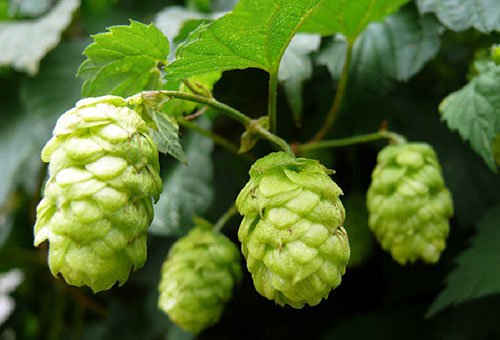
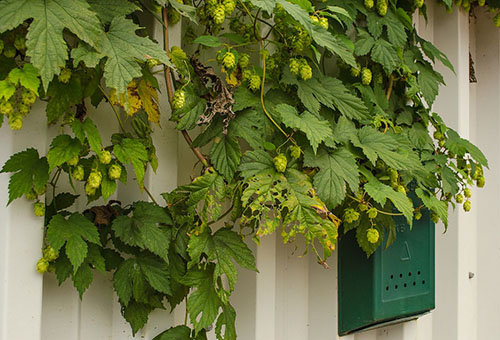
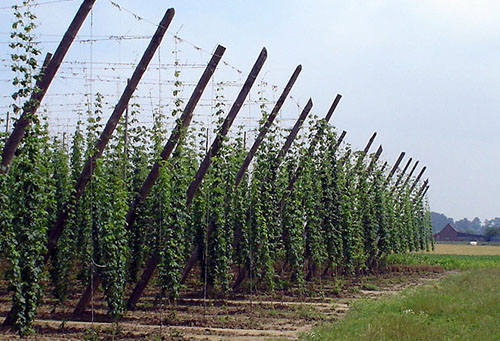
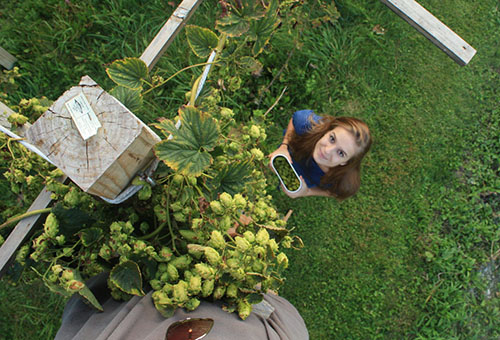
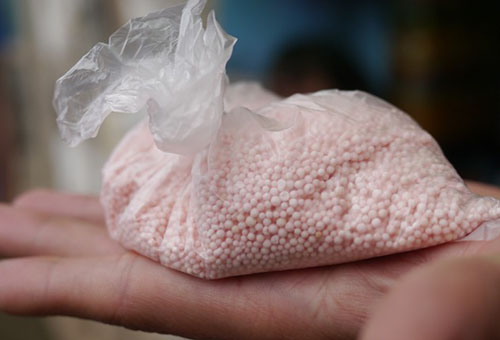
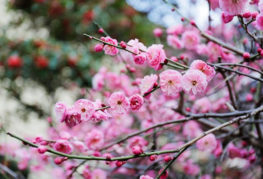
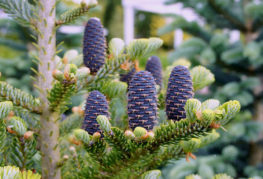
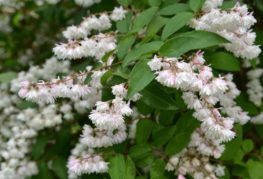



thank
Thank! You inspired me